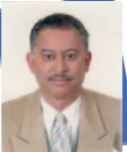Opinion
Connecting the skies
In the wake of the Saarc Summit, it is time to seek regional cooperation and coordination in the field of civil aviation
Birendra Kumar Singh
Without coordination and cooperation, there can be no advancement in any institution, let alone an institution as vital as civil aviation and air transportation. The International Civil Aviation Organisation (ICAO), in its 70th anniversary, has been very assertive about driving home the fact that the present scenario for air transportation should be to bring about cooperation. For this we all, ie, the 191 member states of ICAO, should collaborate to make air transport safer, more secure, and sustained. This can only be achieved with innovation, growth, and technical cooperation.
Data shows that by 2030 over 60 million passengers will be flown round the globe, illustrating the fact that air transport is still more reliable, safer, and above all, the quickest means of travel the world has witnessed till date. Therefore, all contracting states need to stay alert as air transposition requires more human resource than ever before. Civil aviation personnel are on the verge of retirement or have already retired, and this is a major issue that needs to be tackled with utmost urgency as this field is not like any other that can fulfil the required human capital in a jiffy.
Back in the day
Aviation in Nepal has a glorious history of serving society since its inception in 1950. A separate department was established under the Ministry of Works and Transportation in 1957 and in 1983, it was placed under the Ministry of Tourism and Civil Aviation. Nepali aviation was proudly associated with ICAO in 1960, when Nepali skies had Dakotas flying; only later did it witness AVROs and PILATUS Porters. But before even the flights of the Dakotas, in 1949, a four-seater Beechcraft Bonanza of the Indian Ambassador landed in Kathmandu’s then Gauchar (now Tribhuvan International) airport. Before 1972, technicalities were handled by Indian technicians and only later on, did it come fully under the belt of Nepali human resource.
Once the Civil Aviation Training Centre was established, the Department of Civil Aviation stared to churn out technical manpower. But although we have the Civil Aviation Academy, we still lack technical hands. On the occasion of the Civil Aviation Authority Nepal (Caan) Day, all concerned stakeholders should cooperate, coordinate, and collaborate to make air transport in Nepal more productive and sustainable. It is our prime responsibility as an ICAO member state to respond better to ICAO audit policies and challenges emerging from rapid traffic growth while considering how to improve the delivery of technical cooperation and assistance across the full spectrum of civil aviation. It is indeed a sorry affair that we have not yet broken the shackle of the European Union (EU), prohibiting us from flying into EU states and our airlines from carrying EU nationals.
A regional approach
In the wake of the Saarc Summit in Kathmandu, it is also time to consider a regional framework on civil aviation. South Asian nations too can pledge for better understanding, as with the Arab Civil Aviation Commission (ACAC), which was established in 1996 and has a range of objectives. These include enhance cooperation and coordination among Arab states in the field of civil aviation; monitor changes affecting civil aviation, including those of a technical nature; identify the needs of member states; promote coordination and compliance of laws and procedures for civil aviation, with a view to their unification; promote the implementation of standards and recommended practices contained in the Annexes of the ICAO Convention; facilitate the exchange of information on aviation safety; encourage awareness of security; and coordinate training programmes and encourage the development of training institutes.
Nepal could lead the way in coaxing Saarc member states to join in for a better outlook on air transportation. We do not lack experienced human capital, that too in the field of air transport, to be able to table agendas for better solidarity; all we need is to do nose-grinding homework.
As things stand, this is the right time to take initiatives, but before moving forward, it is necessary that concerned stakeholders come together on agreed agendas as to what we seek. It is not just about what Nepal’s civil aviation desires, but what the Saarc nations require, so that we too can form a combined force for the betterment of air transportation.
Taking the lead
First, we need to provide an opportunity to discuss ascending needs identified as a result of deficiencies found through ICAO’s audit programmes. States will have the chance to deal with common issues and find common solutions. Technical solutions can be showcased for each region in operation for adoption or emulation. Leaders, technical experts, and national and international specialists can be utilised and shared as and when required. Industry experts will also be crucial in sharing their knowledge and perception of current and emerging trends and innovations within the context of technical cooperation. Safety and security concerns can also be discussed.
Furthermore, master plans, air traffic management services, airport modernisation, safety oversight, regulatory frameworks, Machine Readable Travel documents, and ePassports could be tabled for implementation, thereby strengthening institutional and cross-industry relationships. This discussion should include experts in the field of aviation (especially ICAO experts) from all Saarc member states, industry providers, as well as national, regional, and international organisations. This would greatly benefit not only Nepal but all neighbouring states. Cooperation, coordination, and collaboration can thus play pivotal roles in the field of air transportation. Enhancing cooperation means enhancing civil aviation.
Singh is a former Joint Secretary ([email protected])




 12.12°C Kathmandu
12.12°C Kathmandu










